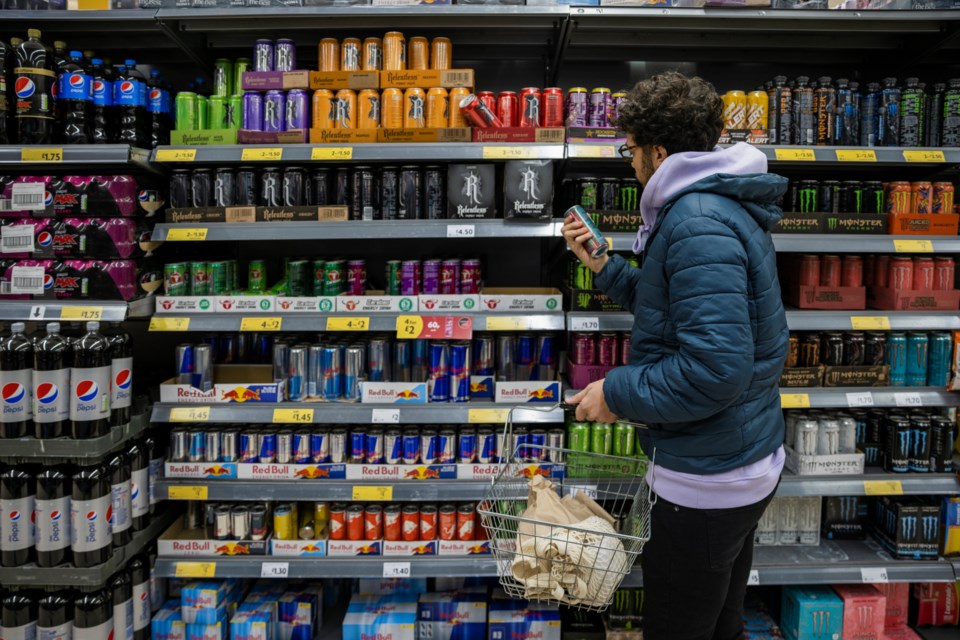Anyone who knows me well, knows I suffer from a not-so-mild caffeine addiction.
My favourite method of delivery is coffee, by far. My baseline is two a day, but I’ll usually max out at four.
Unlike most addictions, this one doesn’t have many noticeable downsides, at least for me. Caffeine-induced jitters? Never heard of them. Restlessness? Not to brag, but I have on several occasions consumed a large dark roast and fallen asleep almost immediately, only to wake up a full eight hours later.
It’s a habit I started honing in university, when I all of a sudden needed to stay awake for aggressively boring lectures held in dimly lit halls, which always seemed to be scheduled for either 8 a.m. or 8 p.m.
But, despite my eternal commitment to the treat that results from pouring water over ground-up beans, every once in a while I reach for something a little stronger.
Just imagine this for a second: it’s 3 p.m., you stayed up far too late the night before writing to meet your deadline and clocked a solid four hours of sleep. Now you’re working another full day at the office before heading straight to your second job, and coffee just isn’t cutting it.
There is truly nothing like a caffeine-packed energy drink to make you feel like a human capable of interacting with other humans again. Except for maybe a nap, but that’s not an option in our scenario.
Or, when consumed before a first-thing-in-the-morning workout, when your eyes are still puffy and the alarm went off too early, an energy drink (or pre-workout, if you’re a real gym rat) can make a high-intensity circuit seem a whole lot less daunting. Still, I try to save them for extreme circumstances only.
While I didn’t solidify my own energy drink habits until I moved to Whistler after university, by most accounts, that isn’t the case for a large portion of Whistler locals who were born in the mid- to late-2000s.
According to the results of a 2021 Communities That Care (CTC) Whistler youth survey released last month, energy drink consumption among local public school students in Grades 6 to 12 has increased by approximately 10 per cent since 2017. Nearly half (about 46 per cent) of respondents reported consuming at least one energy drink in their lifetime.
A 2017 study similarly found that most Canadian youth aged 12 to 24 (73.6 per cent of those surveyed) had consumed caffeinated energy drinks.
Those stats weren’t surprising to me, especially when factoring in just how intertwined the energy drink industry is with action sports, and with Whistler as a resort community.
Take last weekend’s Joyride, for example. For most of its 35-year history, Red Bull has been as much of a marketing powerhouse as a drink manufacturer—“Products” is listed last on redbull.com’s homepage, behind “TV,” “Athletes” and “Events.” Still, it’s the blue-and-silver cans that sponsor more than a few of your favourite athletes, fund some of your favourite events and pay for some objectively cool projects, while in turn creating more brand awareness for the company and increasing sales. In 2021, Red Bull sold more than 9.8 billion of those cans.
Could humans of all ages be putting more harmful things than caffeine and sugar into their bodies? One hundred per cent. But still, excessive caffeine consumption isn’t without risk. That also applies to the no- or low-sugar energy drinks I’ve convinced myself are “healthier” than the originals and taste less like gasoline than some other brands out there, as much as I’d like to believe otherwise.
Occasionally downing an energy drink doesn’t pose any major health hazards, especially to healthy adults, but excessive caffeine consumption hits younger people harder (a memory of a then-12-year-old hockey teammate literally bouncing off the walls of a tournament hotel room after slamming two 5-Hour Energies just came flooding back). In some cases, it can even contribute to heart issues, hypertension, anxiety and other problems. Some researchers have also found a link between energy-drink consumption and high-risk behaviour, especially when alcohol is thrown into the mix.
Again, there are bigger issues going on in the world—bigger issues going on with Whistler’s high school students, if we’re being honest—than energy drinks. That said, should a 13-year-old view cracking open a can of Monster or Rockstar or Red Bull the same way they’d view cracking open a can of fruit-flavoured soda water?
If you asked the snowboarders behind the brand Drink Water, I’m gonna guess they’d say no. Bryan Fox and Austin Smith started the project all the way back in 2011, screen-printing sweatshirts and tossing stickers on their boards to encourage others to question what’s being sold to them.
“It came about as we watched the snowboard industry, and other similar industries, be bought up by energy drink brands peddling their products to kids,” they explain on their website. “Oddly enough, nobody was really opposing them.”
As positive of an initiative as it is, Drink Water probably won’t be taking over the naming rights for major events like Joyride anytime soon, but questioning what’s being sold to you—and making informed decisions—is never a bad idea.




